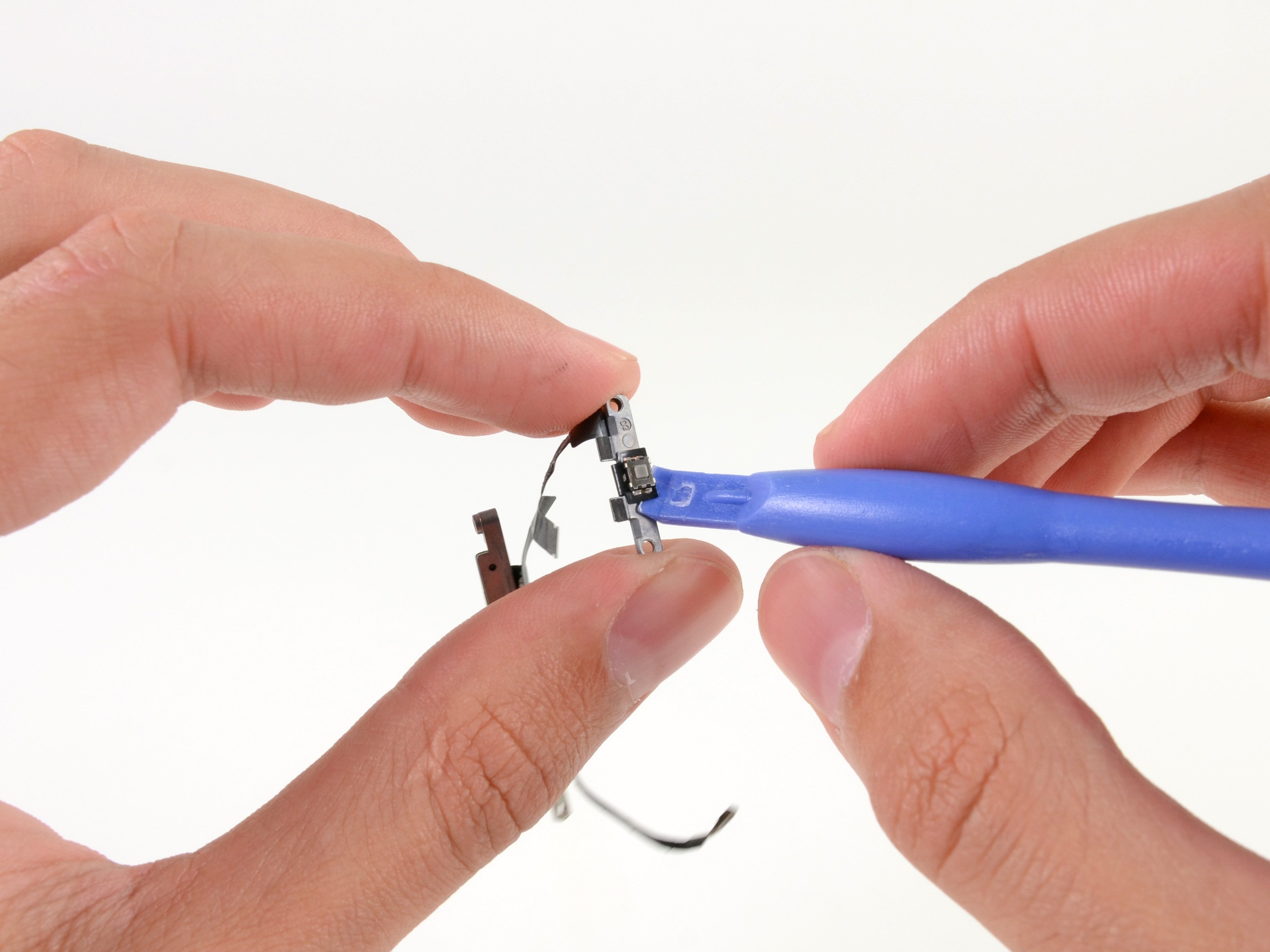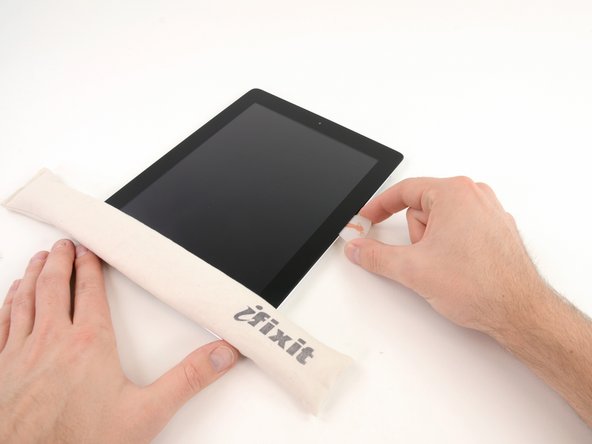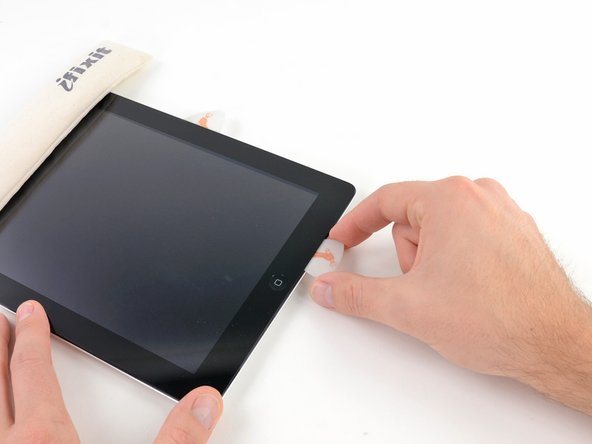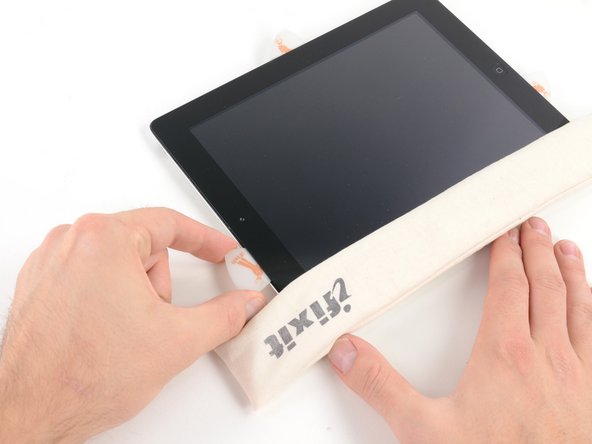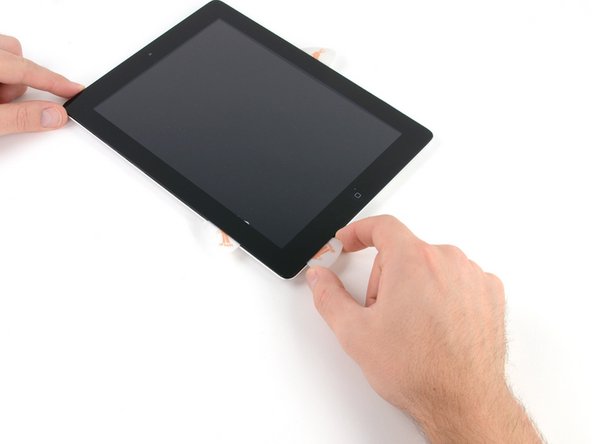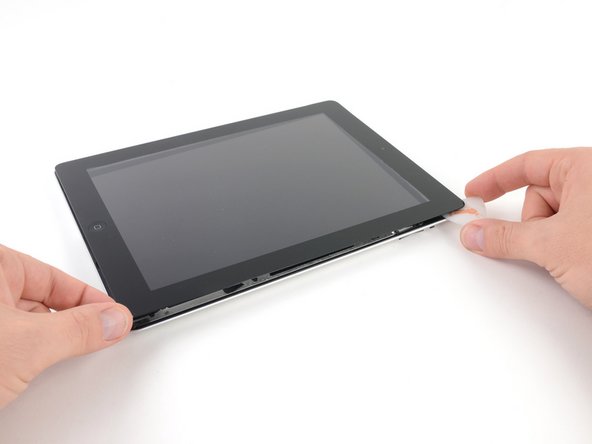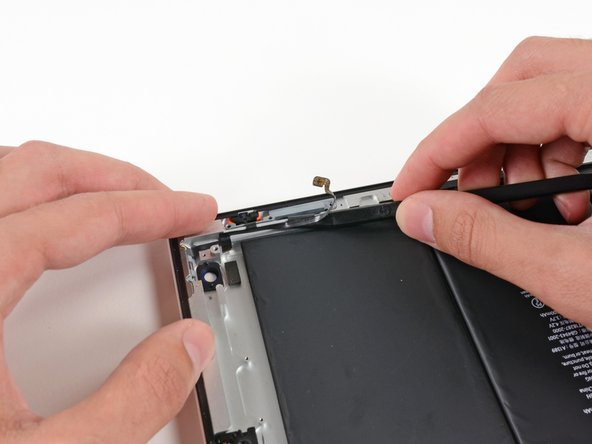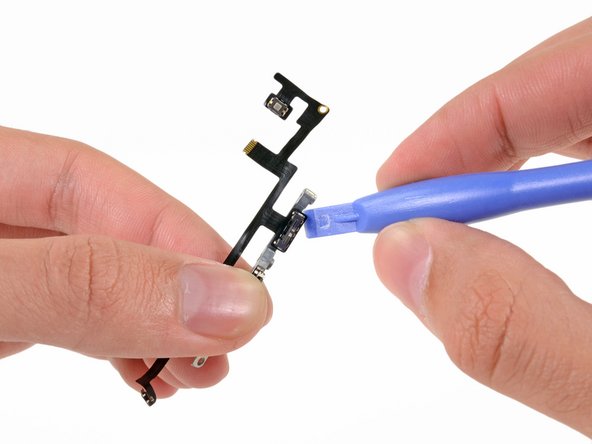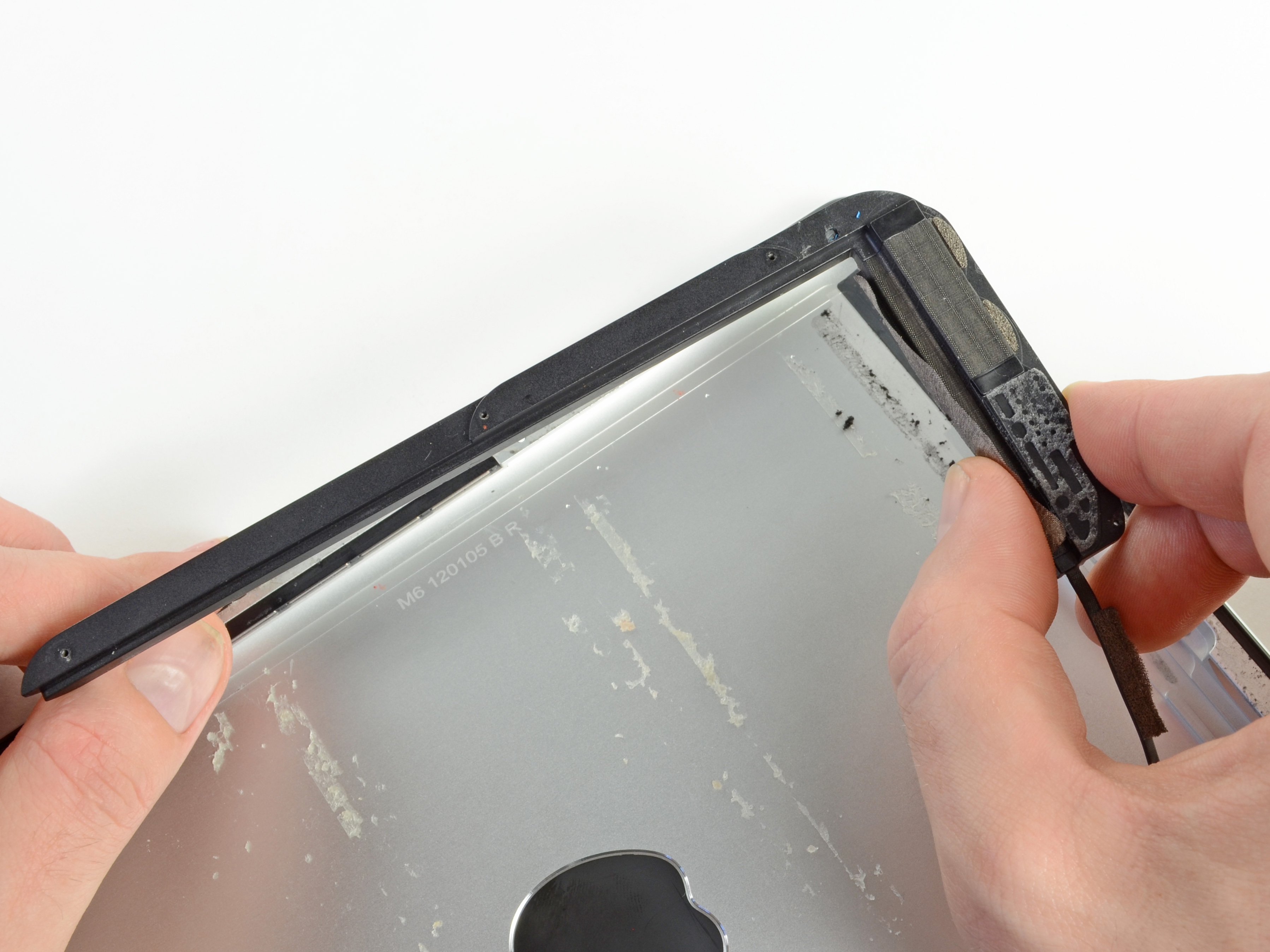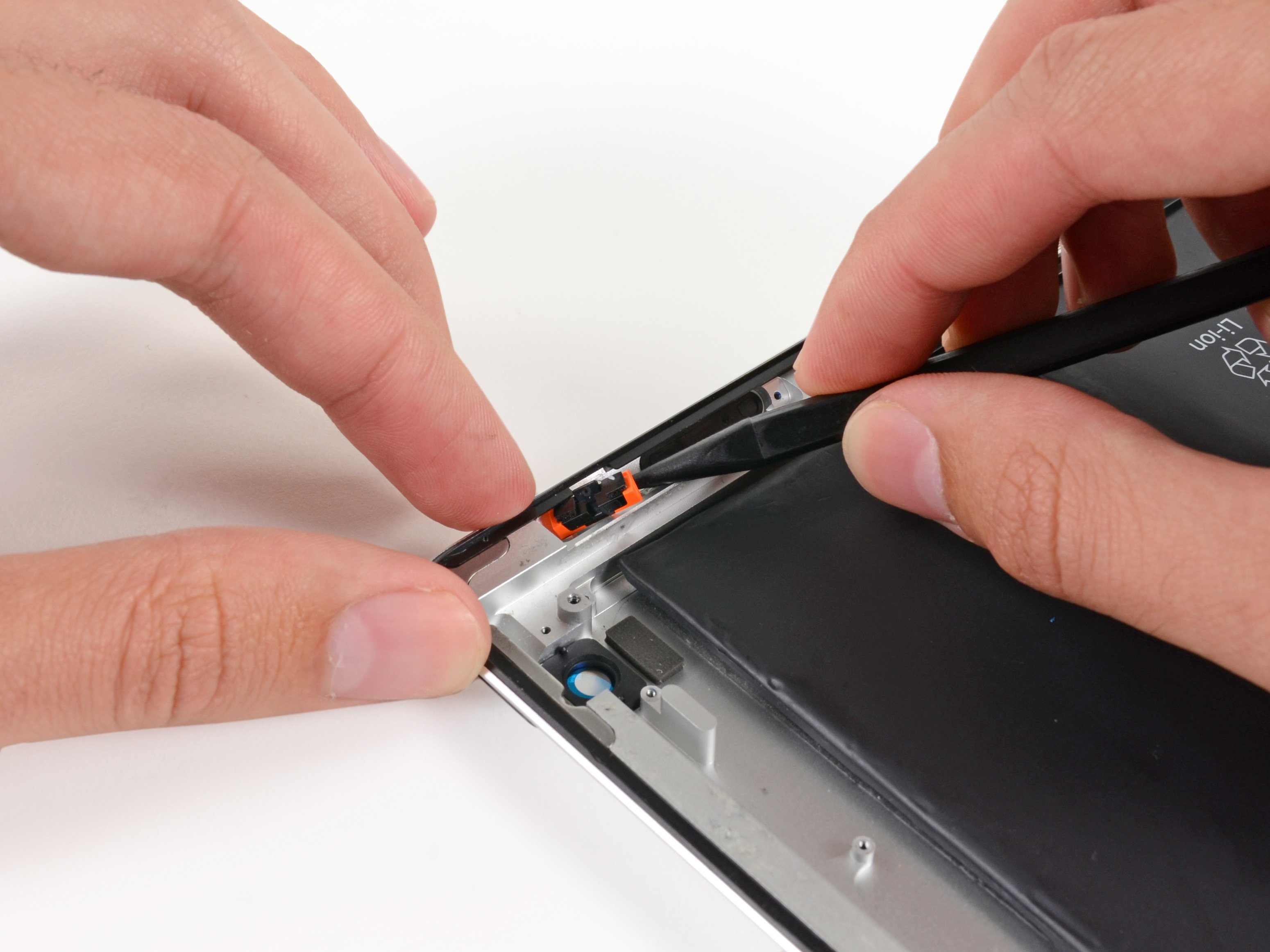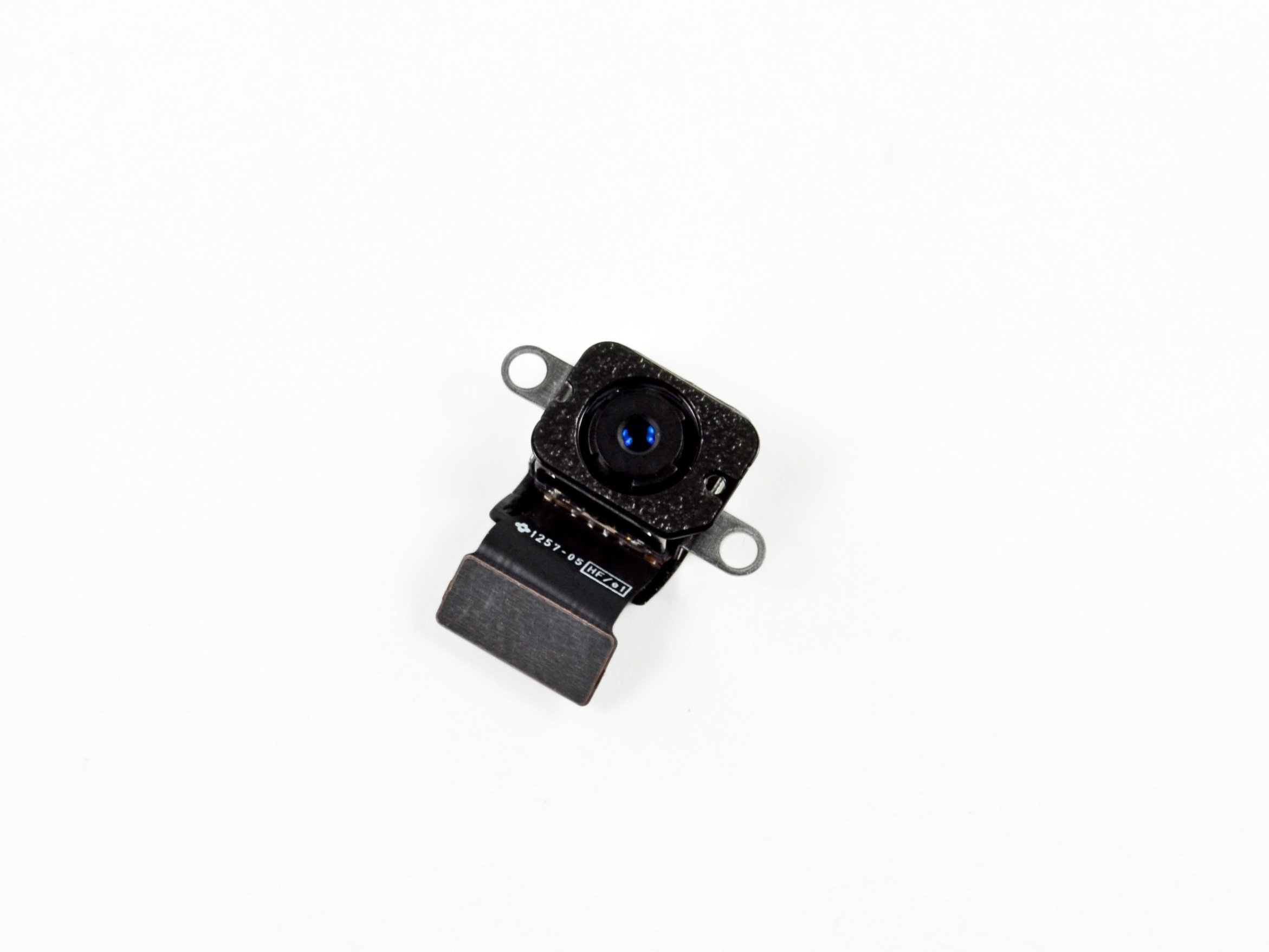iPad 3 Wi-Fi Power & Volume Button Replacement.
Duration: 45 minutes
Steps: 60 Steps
Dive into this guide to swap out those Power & Volume buttons like a pro!
Step 1
For carousel microwaves: Double-check that the plate can spin without any hiccups. If your iOpener gets stuck, it might overheat and cause a burn—so keep it moving!
Before you start, give your microwave a quick clean—any leftover yuck at the bottom might decide to hitch a ride on your iOpener.
- Pop the iOpener right in the middle of the microwave and get ready to roll.
Tools Used
Step 2
Hey there! Just a friendly reminder to keep an eye on the iOpener during your repair adventure. Overheating can lead to an unexpected burst, and we definitely don't want that! Aim to keep it below 100˚C (212˚F).
If you notice that the iOpener looks a bit puffy, give it a break and don't touch it. Safety first!
In case the middle of the iOpener is still too toasty to handle, hang tight and let it cool down a bit more before giving it another go. A well-heated iOpener should keep its warmth for up to 10 minutes. You've got this!
Depending on how powerful your microwave is, you might need to adjust the heating time a bit. The iOpener is ready to roll when it's just about too hot to handle.
- Warm up the iOpener in the microwave for about thirty seconds.
- As you work, if the iOpener cools down, just pop it back in the microwave for another thirty seconds to keep things toasty.
Tools Used
Step 3
Watch out! The iOpener is going to be super toasty, so handle it with care. If it's too hot to handle, grab an oven mitt and give your hands a break!
- Carefully take the iOpener out of the microwave, gripping one of the flat ends to steer clear of the sizzling center. Safety first, friends!
Tools Used
Step 4
Heads up! The iOpener gets super hot, so make sure to grab it only by the little end tabs to keep your fingers safe.
No microwave? No problem! Just warm up your iOpener by placing it in some boiling water instead.
- Grab a pot or pan and fill it with enough water to give your iOpener a nice bath.
- Turn up the heat and bring that water to a rolling boil. Once it’s bubbling, shut off the heat.
- Gently lower your iOpener into the hot water and let it soak for 2-3 minutes. Just make sure it’s fully submerged and having a good time.
- Using tongs (safety first!), carefully fish out the warm iOpener from its steamy spa.
- Give it a good drying with a towel so it’s nice and ready for action.
- And voilà! Your iOpener is all set to go! If it needs a little more warmth, just repeat the process: boil the water, turn off the heat, and let it relax in there for another 2-3 minutes.
Tools Used
Step 5
Put on those stylish safety glasses to keep your peepers safe, and remember to handle that LCD screen with care—it's more delicate than it looks!
This will keep those pesky glass shards under control and help maintain the display's strength while you're carefully prying and lifting it up.
- Got a cracked display glass? Keep it from getting any worse and protect your fingers by taping it up before you dive in.
- Cover the entire iPad screen with overlapping strips of clear packing tape until it's fully sealed.
- Follow the guide as best as you can, but heads up—once the glass is cracked, it might keep spreading cracks as you work. You might need to carefully scoop out the glass shards using a metal prying tool.
Step 6
Just a friendly reminder: while you're tackling this project, you might encounter some pesky shards of glass. So, grab those safety glasses and keep your peepers safe from any unexpected flying bits. You've got this!
- Place the iOpener flat against the right edge of your iPad, giving it a little love tap for good measure. Make sure it’s making solid contact with that beautiful iPad surface.
- Let the iOpener hang out on the iPad for about 90 seconds. This gives it plenty of time to warm things up before you dive in and open the front panel.
Tools Used
Step 7
Getting that slim tip of your opening tool wedged between the glass and plastic might take a little muscle. Stay cool, be patient, and gently wiggle the tool back and forth until it slips in nicely.
- Look closely and you’ll notice a tiny gap in the iPad’s adhesive ring, hanging out in the upper right corner, about 2.0 inches (~5 cm) from the top. It's like a secret entrance just waiting for you to take advantage of it!
- Now, let’s get to work! Position your tool near the mute button and gently slide the tip of a plastic opening tool into that little gap between the front glass and the plastic bezel. Just nudge it in there, enough to widen the crack a bit. You’ve got this!
Step 8
- Carefully slide your tool right between the plastic display bezel and the front panel glass—think of it as finding the perfect spot to gently pry things apart without causing a fuss.
Step 9
- Keep the tip of your plastic opening tool tucked between the front glass and plastic bezel, then slide a plastic opening pick right alongside it to gently pry open the gap.
Step 10
- Take the plastic opening tool off the iPad, then slide the opening pick a bit deeper under the front glass—aim for about half an inch in. Keep it smooth and steady!
Step 11
- As you carefully work on loosening the adhesive on the right side of the iPad, go ahead and warm up the iOpener again, then pop it back onto the bottom edge to keep things nice and ready.
Tools Used
Step 12
This adhesive is super tough, so you might need to bring out some serious muscle. Take your time and handle it with care!
If you can spot the tip of the opening pick peeking out from under the front glass, give it a gentle tug. Don’t worry, using the pick this deep won’t cause any harm, but it might leave a little adhesive residue on the LCD. Just a friendly heads up!
- While the iOpener warms up the bottom edge, start loosening the adhesive along the right side of the iPad.
- Gently slide the opening pick down the iPad’s edge, peeling back the adhesive as you go.
Tools Used
Step 13
You might need to slide the heated iOpener back onto the right edge of the iPad as you work on loosening the adhesive. How long the iPad has cooled off during your progress will decide if this move is necessary.
- If your opening pick gets stuck in the adhesive, try 'rolling' it gently along the edge of the iPad to keep loosening that sticky stuff.
Tools Used
Step 14
- Before pulling out that first opening pick from the bottom corner of your iPad, slide a second pick under the right edge of the front glass to keep the adhesive from sticking back together.
- Give your iOpener another warm-up, then move it to the top edge of the iPad to keep things nice and toasty.
Tools Used
Step 15
The Wi-Fi antenna is secured with screws and a cable along the bottom right edge of the iPad's rear case. Since it’s positioned in a tricky spot, take your time and handle it gently to avoid causing any permanent damage.
- Alright, folks, it's time to put on your safety goggles and take a deep breath! We're entering the delicate territory here.
- You'll need to gently free the adhesive that's holding the antenna to the front panel. Remember, the goal is to keep those sensitive parts connected to the bottom of the iPad safe and sound. So, let’s take it step by step and be super careful!
Step 16
Heads up! Don’t slide the pick past the bottom right corner — that’s where the Wi-Fi antenna hangs out, and we definitely don’t want to mess with it.
- Gently slide the opening pick around the bottom right corner of the iPad to loosen the adhesive and get things moving.
Step 17
Carefully slide the opening pick along the bottom right edge of the front panel. The Wi-Fi antenna is tucked close to the corner, so take it slow to avoid accidentally cutting through the adhesive and causing trouble.
Keep the pick tucked just a tiny bit under the front glass—about 1/8" (3 mm) of the tip should stay put, no full extraction needed!
- Carefully slide the tip of your opening pick along the bottom edge of the iPad to gently loosen the adhesive around the Wi-Fi antenna.
Step 18
- After you pass the Wi-Fi antenna (about 3" or 75 mm in from the right edge, right near the home button), slide the opening pick all the way in.
- Gently slide the pick to the right to break the adhesive holding the Wi-Fi antenna to the front glass.
- The antenna is fastened to the bottom of the iPad with screws and a cable. This step frees the antenna from the front panel so you can remove the panel without causing any damage.
Step 19
Keep the iOpener heating sessions to under a minute, and give it a cool-down break of at least two minutes before firing it up again.
If the adhesive's starting to cool down along the bottom edge, just give your iOpener another quick warm-up to heat things back up and get that adhesive soft again where you need it.
- Carefully peel back the adhesive along the bottom of the iPad. Slide the opening pick around the home button, then gently push it back in to a depth of about 1/2 inch (10 mm) once it passes the button. Keep it steady and patient—it’s all part of the process!
Tools Used
Step 20
For iPad 4 models, gently slide the pick in this spot, but keep it to about 1/2 inch (10 mm) deep. We want to keep that home button ribbon cable safe and sound!
- Keep working that adhesive loose all along the bottom edge of your iPad like a pro!
- Once you've got it going, slide in the opening pick and leave it resting under the front glass by the home button.
Step 21
- Warm up the iOpener in the microwave and place it along the left edge of the iPad. This will help loosen up the adhesive in that area, making your job a little easier.
Tools Used
Step 22
If the adhesive has cooled too much, place the iOpener back on the top edge and keep at it. If it’s cooled off too much, just give it a quick reheating to get things back on track!
- Gently glide the opening pick along the top edge of the iPad, giving it a little pull to navigate around the front-facing camera bracket.
- The adhesive here is pretty strong, so you might need to put in a bit of elbow grease. Take your time and be careful not to slip—your iPad will thank you!
- If the opening pick feels like it's stuck in the adhesive, try 'rolling' it as demonstrated in step 9.
Tools Used
Step 23
If the adhesive feels warm enough, go ahead and take that iOpener off the iPad for now. But if the adhesive's still being a bit stubborn and clingy, give the iOpener a quick reheat and place it back on the left edge while you keep working.
- Keep peeling away that adhesive at the top edge of your iPad and gently wiggle the opening pick around that top left corner like you're giving it a little dance!
Tools Used
Step 24
The digitizer cable is hanging out around 2 inches (50 mm) from the bottom of your iPad. So, when you’re sliding that pick, let it stop when you reach about 2.25 inches (60 mm) from the bottom. You’ve got this!
- Gently slide the opening pick along the left edge of your iPad, letting it work its magic to release that adhesive as you go. No worries, the adhesive is pretty thin here thanks to the digitizer stretching along the entire left side. Just be cautious and don’t push the pick too deep—aim for a max of 1/2 inch (10 mm) to keep that digitizer safe and sound.
Step 25
Hey there! Just a heads-up: the bottom of that digitizer cable is hanging out only about an inch (25 mm) from the bottom of your iPad. So, take it easy and go slow—let's not accidentally snip that cable!
- With your trusty opening pick still nestled under the bottom edge of your iPad, it's time to free the adhesive clinging on to the bottom left corner. Let's give it a gentle nudge and set it free!
Step 26
It looks like some of that adhesive along the edges of your iPad might have decided to stick around a little longer than expected. No worries! Simply slide a pick under the edge of the iPad where the front glass is still holding on tight and give that adhesive a little 'snip' to free it up.
- Grab one of your opening picks and gently wedge it under the bottom right corner of the iPad, then lift it up and grip it with your fingers.
Step 27
Watch out for any stubborn adhesive still hanging on, and carefully slide an opening pick under the front panel to slice through any glue keeping it stuck.
- Grab the iPad by the top and bottom right corners, then gently twist the front glass away from the device.
- When putting everything back together, give the LCD a good once-over with a microfiber cloth and some compressed air to zap away any dust or fingerprints before snapping the glass back on.
Step 28
- Unscrew the four tiny 2 mm Phillips #00 screws that are holding the LCD onto the aluminum frame. Keep them safe—they're small but mighty!
Step 29
Handle the LCD with care—its ribbon cable is delicate and can snap if you bend it too much.
- Grab a plastic opening tool or spudger and gently pry up the right edge of the iPad’s LCD.
- Carefully swing the LCD open around its left side and let it rest on the front panel.
Tools Used
Step 30
- Gently use the tip of your spudger to lift the tape that’s hiding the LCD ribbon cable connector underneath.
Tools Used
Step 31
- Gently lift the retaining flap on the LCD ribbon cable's ZIF connector. Be careful, it's like a tiny lid keeping everything in place.
- With a little help from your fingers (or tweezers if you're feeling fancy), gently pull the LCD ribbon cable out of its cozy socket on the logic board. Take your time!
Step 32
- Carefully lift the LCD away from the front panel without touching the screen. You've got this!
Step 33
If you need to, gently lift off that piece of tape holding the digitizer ribbon cable snugly against the logic board.
- Lift the retaining flap on both of the ZIF connectors for the digitizer ribbon cable. Let's get those connections ready!
Step 34
- Gently slide the flat end of your spudger under the digitizer ribbon cable to loosen up that sticky adhesive.
- Carefully wiggle and pull the digitizer ribbon cable straight out from its sockets on the logic board—steady hands win here!
Tools Used
Step 35
- Gently peel back the digitizer ribbon cable and use the flat end of a spudger to carefully break the adhesive grip holding the cable to the rear aluminum case.
Tools Used
Step 36
- Gently use your fingers to carefully lift the digitizer ribbon cable out of its snug spot in the aluminum frame. Take your time – it’s not a race!
- Now, remove the front panel from the iPad. A little wiggle and it should come off with ease!
Step 37
- Carefully peel off the electrical tape covering the headphone jack cable connector. It’s like peeling a sticker, but with more purpose.
- Grab your spudger and gently use the tip to lift the retaining flap on both ZIF connectors. These are the little guys holding your headphone jack cable in place on the logic board. Be gentle!
Tools Used
Step 38
- Gently slide the flat end of your trusty spudger under the headphone jack assembly cable to break free the adhesive holding it snugly against the rear aluminum frame.
- Once that's done, carefully pull the headphone jack assembly cable straight out of its cozy socket on the logic board.
Tools Used
Step 39
- Gently peel back and take off the adhesive tape covering the headphone jack assembly.
Step 40
- Grab your trusty spudger and gently work the flat end underneath the front-facing camera connector to pop it out of its cozy little socket on the headphone jack assembly.
- Now, smoothly slide the spudger to the right, letting go of the adhesive that's been holding the camera cable in place.
Tools Used
Step 41
- Gently use the tip of a spudger to lift the retaining flap on the microphone cable ZIF connector. You got this!
Tools Used
Step 42
- Gently wedge the spudger underneath the microphone ribbon cable and lift it out of its ZIF connector. Be careful not to damage the cable!
- Slide the spudger to the left to gently peel away the adhesive that's keeping the microphone ribbon cable attached to the headphone jack assembly.
Tools Used
Step 43
- Gently lift the little flap holding down the volume/power button ribbon cable connector on the headphone jack assembly board.
- Carefully slide the volume button ribbon cable out of its ZIF connector.
Step 44
These screws are nestled snugly into the aluminum frame. Make sure to keep your screwdriver lined up with the screw to prevent any stripping mishaps. You've got this!
- First, let’s get those screws out of the headphone jack assembly. You'll need to remove the following:
- Five 2.6 mm Phillips #0 screws
- Two 2.0 mm Wide Head Phillips #00 screws
- Two 2.6 mm Phillips #00 screws
Step 45
- Carefully lift the headphone jack assembly ribbon cable away from the foam pad nestled in the top left corner of the rear case. Take your time with this step—it’s all about finesse!
- If the adhesive is being a bit stubborn, feel free to use the flat end of a spudger to gently coax it free from the foam. A little encouragement goes a long way!
Tools Used
Step 46
- Grab the headphone jack assembly firmly with both hands and gently pull it out of the iPad, keeping an eye on any cables that might be hanging out.
Step 47
- Start by removing the screws that are holding the power & volume button cable in place on the aluminum frame:
- Two 5.5mm Phillips #0 screws
- One 2.6mm Phillips #0 screw
- Two more 2.6mm Phillips #0 screws
- These screws are angled into the frame, so make sure to line up your screwdriver with the screw for a smooth removal.
Step 48
- Pop off the plastic cover that's hiding those volume buttons. You've got this!
Step 49
This screw goes in at an angle through the aluminum frame. Keep your screwdriver lined up with the screw so it slides in smooth and easy.
- Unscrew the lone 2.6 mm Phillips #00 screw that’s securing the volume button frame to the aluminum frame. Easy does it!
Step 50
- Carefully slide the edge of a plastic opening tool under the sleep/wake sensor—watch out for that delicate cable!
- Gently work the plastic tool around the sensor to loosen the adhesive and set it free.
Step 51
- Gently slide the plastic opening tool under the power and volume cables to break the adhesive seal. Patience is key—just take it slow and steady!
Step 52
- With the pointy end of your trusty spudger, gently pry up the adhesive that’s holding the volume button branch of the ribbon cable in place. You've got this!
Tools Used
Step 53
- Gently slide the tip of your spudger upward along the iPad to loosen the adhesive holding it in place.
Tools Used
Step 54
- With the spudger's tip nestled under the ribbon cable, give the power button a gentle nudge to lift it out of its cozy spot in the aluminum frame.
Tools Used
Step 55
- Grab the power and volume button cable with both hands, and gently wiggle the volume buttons and lock switch out of their cozy spots in the aluminum frame.
- Now, carefully lift and slide the power & volume button cable right out of the rear aluminum case.
Step 56
- Slip the plastic opening tool gently underneath the top edge of the power button. No need to rush, take it slow!
- Once it's in, carefully lift the top side of the power button away from its bracket. Just a little nudge and it'll pop right out!
Step 57
- Give the underside of the power button a little love just like you did before.
- Now, gently lift and take away the power button bracket from the power & volume button assembly. You got this!
Step 58
- Gently wedge the tip of your plastic opening tool under the top side of the rotation lock or mute switch.
- Carefully slide the tool downward to release the top part of the switch from its bracket.
Step 59
- Slide the tip of your plastic opening tool under the top volume rocker and gently pry upwards to pop it free from the volume buttons bracket.
- Do the same for the bottom volume rocker—slide, pry, and separate it from the volume buttons bracket.
Step 60
- Now it's time to put everything back together! Just follow these steps in reverse and you'll be back in action in no time. If you hit a snag, don’t hesitate to schedule a repair for some extra help.
